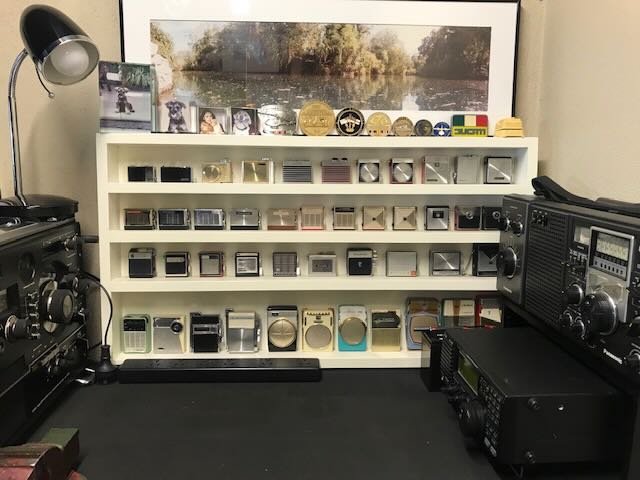 Many thanks to SWLing Post contributor, Mark Pascoe, who writes:
Many thanks to SWLing Post contributor, Mark Pascoe, who writes:
Hi, Thomas.
I rarely see photos of micro radio collections, so I thought some of your subscribers may be interested in seeing my little collection.
These are all late 50s to 60s radios made in Japan and hand soldered. Just over 50% of them are still working ( Deoxit is my best friend) l live in Adelaide Australia and recently retired doing the customary downsizing thing. Now I live in a small townhouse and have what must be one of the smallest radio shacks, 1m x 1/2 metre!
With a 50 ft long wire running front to back above my roof. I’m not an overly experienced SWL, and I have a question. I have 3 SW radio’s with 5 antenna attachment points. Is there a recommended antenna splitter that goes 1 into 5 without any interference ? I currently manually connect/disconnect my antenna’s.
Thanks Mark Pascoe.
These are simply amazing, Mark! I don’t believe anyone has ever shared photos of their micro radio collection before, so we’re most appreciative. There are some amazing designs in this collection!

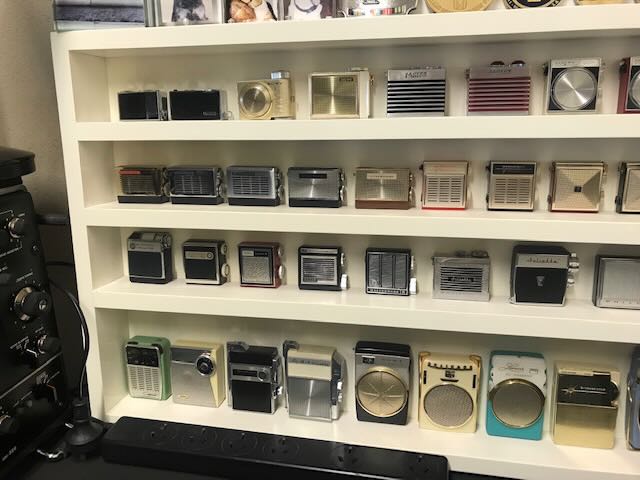
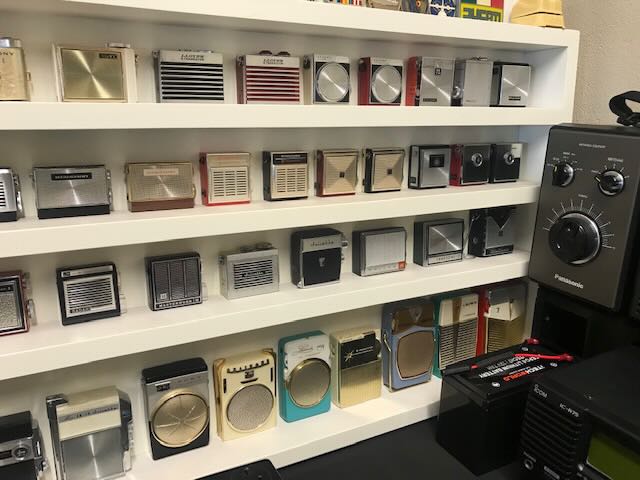
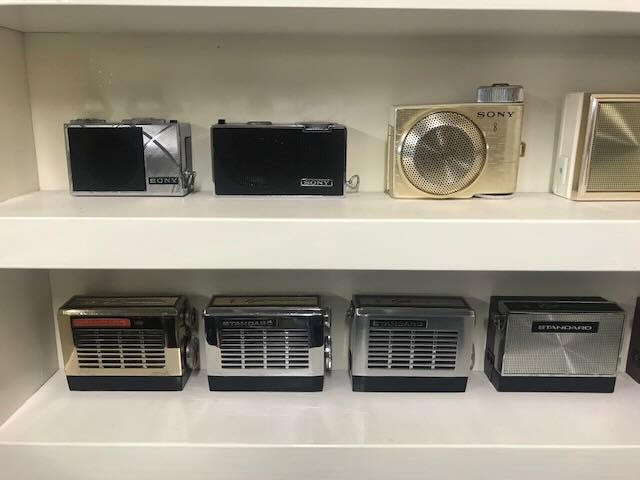
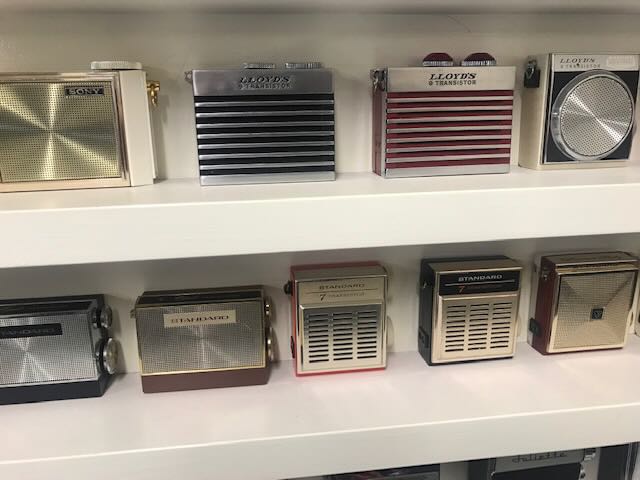
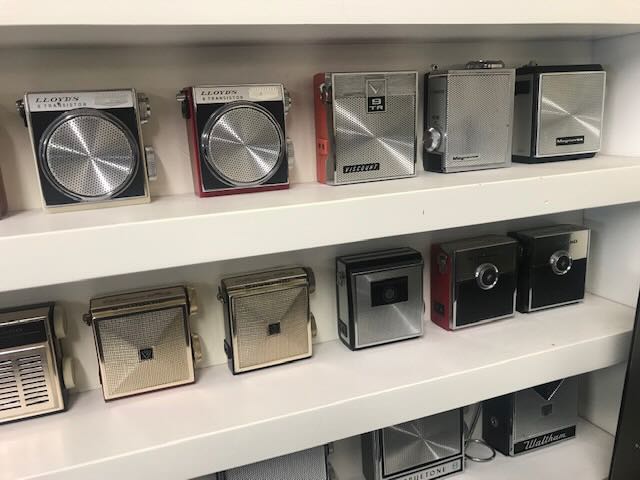
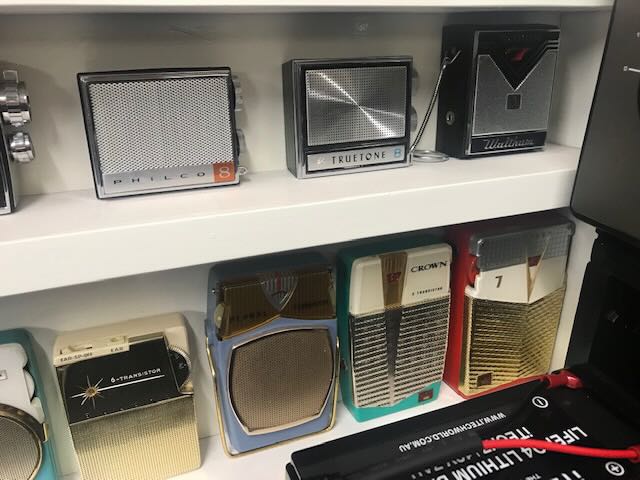
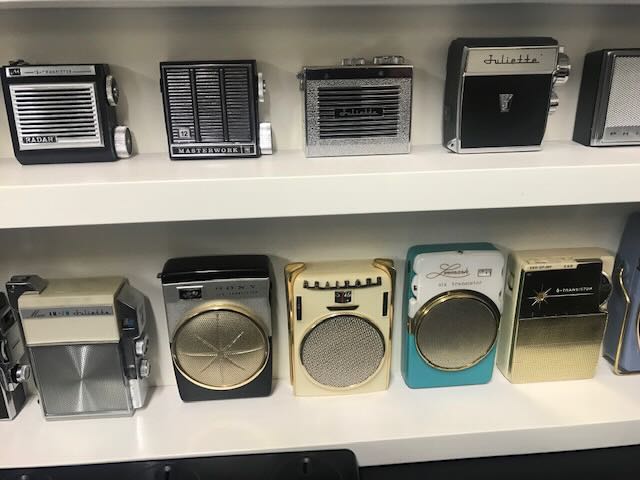
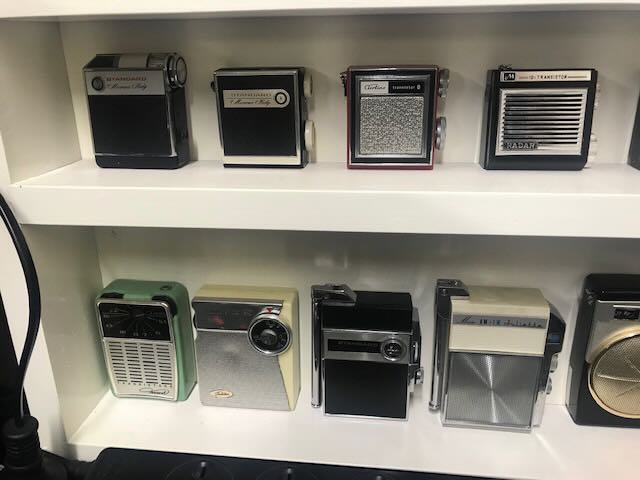
Dear sir,
I have a Standard Micronic Ruby Micro Transistor Radio, Model SR-H436, AM Band, 8 Transistors, Made In Japan, I see you have one the same and I would like to show you pictures and sell it to whomever might be interested.
Hello, have you ever heard of a Viselco Micro Seven? I have one and cannot find anything on it ANYWHERE
Thanks in advance
Michael N
I have a Ross electronic 7 micro re-717 new in the box. I’m looking for any information I can find on it worth. Can you point me in the right direction?
Thank you for being a source of inspiration and motivation for your readers.
I have a Regency tr1 has rhinestones for the grill can send pics. Email [email protected]
Moin…hatte in den 60ern eine kleine Sammlung, die Hersteller warben mit six und Steven Transistors, aber es waren auch schon mal Imitate verlötet…
In the third picture there’s a closeup of three silvery radios. They’re beautiful. They remind me of miniature toasters! I can’t quite read the badging. Can you tell me what they are?
Hi,Kevin. The radio is a STANDARD micronic ruby 8 transistor. SR-H438. Quite a heavy little radio, made in Japan. I have 3 as they are in different finish’s. Gold, chrome and brushed silver. When I purchased these micro radios years ago they averaged around $35-$50. That’s why I have 2 or 3 of the same radio in different colours or finishes. Mark.
“Geeky” micro radio enthusiasts
might be interested in how and why
Sony made an unusual 55 kHz IF micro radio
on a chip that could operate at 0.96 volts DC
with surprising AM performance:
https://www.radiomuseum.org/forum/sony_advanced_low_voltage_single_chip_radio_ic_1992.html
swling review of SRF-59
https://swling.com/blog/2011/08/a-review-of-the-sony-srf-59-cheap-fun-mediumwave-dx-thrills/
When I was a kid I had a Ross Micro ten-transistor set. It was by far my best-performing AM radio, and if I had it today in working condition it would be right up there with the Panasonic RF-2200. My ultimate test back then was to try to receive WAIT, 820, Chicago in broad daylight from my shack in St. Louis, MO. Success! I wonder how many transistors were actually active in its circuit. Surely more than six.
This one?
https://www.radiomuseum.org/r/ross_micro_re_210re21.html
Nice collection of transistor radios. The nice thing is that they don’t up take much space.
As to antenna switch. I have two You-Loops that I wanted to place at 90 degrees and then switch between them. Since the loops are in a different room from where I use them with an AirSpr sdr, i created a remote switch that is placed at the antennas before the feed line. I used a module that can switch between the two antennas by applying a voltage to a pin on the module. I added a remote keyfob type remote module. Now I just press the button on the keyfob and the antennas switch.
Since the Keyfob has two buttons, I also created a more deluxe version where I can use one button to select the antenna and then use the second button to switch the NOOELEC Lana preamp in and out of the circuit. Works great and I can just sit at my computer running SDR Sharp and select antenna with and without preamp and instantly see the results on the signal.
I need to write this up for a forum post. Something to do in the near future.
73
Bill WD9EQD
Smithville, NJ
Wonderful collection. I used to have several of those as a kid in the 1950’s. Wish I still had them.
In answer to your question, Mark, the device you are looking for is a splitter/combiner that works to break up your signal. In my opinion, Mini-Circuits has the best of them, but there are other good vendors as well, like Stridedberg. The one I use is this one:
https://www.minicircuits.com/WebStore/dashboard.html?model=ZSC-4-1%2B
There’s no reason you can’t stack them up to split even more ways, so here is their page to select them:
https://www.minicircuits.com/WebStore/Splitters.html
You’ll want 50 ohm impedance with connectors, unless you are building your own. The low and high frequency can decide which one to choose, and the higher the isolation, the less they will interfere with each other.
Thanks, Eric. I’m going with the one your using. Appreciate your advice. Mark.
That’s a great collection, looks like you have a certain “type” in transistors and don’t just collect any old small radio. 🙂
Great collection, thanks for sharing!
About 25 years ago I built an antenna splitter following a description in a radio magazine. The description was more or less the same as the KA7OEI PDF article in the link Andrew reccomend. It worked really great!
Just for fun I built a second splitter using resistors only.
That construction worked more or less the same way as the first one, but signals was around an S-degree lower. So a simple RF amplifier using a J310 FET was made and inserted close to the antenna, which was placed around 40 meters from the house to avoid interference from our TV. Both systems worked great until I installed an internet router. The router powersupply produced a lot of noise over the shortwave spectrum, so had to experiment a to get rid of it. An isolation HF-transformer worked best. Two separate windings on a toroid core got rid of the noise.
Today I’m living 80 miles from that place, and plan to make another splitter using resistors and an isolating HF transformer.
A few days ago I received a NOOELEC Lana preamp which I plan to place at the antenna, and feed 12V via a power-T which remain to be built. I’ll place the antenna around 70 meters from the house. A kind farming neighbour has given me permission to put up the antenna on his ground, and bury a coax cable from my house to the antenna. So far the lousy wheather has stopped me from starting the project. But I also have to make the power-T. But I have the whole summer to finish…
I’ll be glad to share the schematic for the splitter using resistors if there is any interrest.
Thank you for sharing Mark, and thanks for posting Thomas. What a wonderful collection.
To many of us baby boomers, the late 50’s and early 60’s were a time when there was an explosion of transistor radios hitting the shelves. They were available everywhere, from TV-Radio shops, department stores and even drug stores. Many were imported from Japan and usually had the number of transistors proudly advertised on front of the case. The two transistor ones were considered toys and weren’t subject to stricter import regulations as were the six transistor and above models. As a result the two’ers were the cheapest. The six transistor radios were the most popular though and generally performed superior to their toy cousins.
Some models came with CD (Civil Defense) markings on the radio dial to direct you stations on the Conelrad system in the event of a national emergency. Most radios came with the soon-to-be ubiquitous 9-Volt battery, earphone and carrying case which ran the gamut from inexpensive plastic to geniune leather.
Very interesting collection! Thanks for sharing!
Living down under here in New Zealand,Mirco transistor radios are like “Hens Teeth”,extremely hard to find.But over the years I have been able to find and collect only a few of which I found in OP shops or “Flea Markets”None were in working order of course.For me they need to be the most vintage in age.No FM.AM only,pocket size or table top models.Most problems I have found when collecting them is battery corossion,ruining the battery terminals,cracked plastic cases,cracked circuit boards.I take them apart,clean,repair and restore back to their former glory.Its a passion I have.Some have lost their lables,so I need to try and find lable names that match.I treasure all I have.I did post photos of part of my collection on these pages a few years ago.I dont have my radios on disply because I have no room for them,so they are all boxed and stored without batteries in them.They all work.I dont call them Micro radios,I call the small ones “Pocket size”.
Nice collection, thanks for sharing it !
As for sharing an antenna amongst multiple receivers, the device is called antenna splitter/combiner and an example can be seen here
http://ka7oei.blogspot.com/2019/11/homebrew-construction-of-2-and-4-port.html
forgot, to compensate the loss introduced from the splitter you may add a simple preamplifier stage between the antenna and the splitter, something like this
https://worldradiohistory.com/Archive-DX/Ham%20Radio/70s/Ham-Radio-197911.pdf
may fit pretty well, it’s simple and offers just that bit of gain needed
sorry was unclear, the preamp stuff starts from psge #14 in the pdf